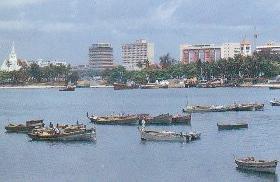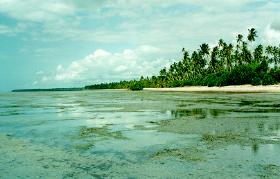|
“Yes, I have used the words ‘we have invested,’ since that money is an investment in your and our future because we share the planet. It is in our mutual interest to insure a bright future for your people and ours,” said Korff.
He noted that globally, coastal areas have great potential for economic development, offering opportunities to support coastal populations and contribute to national economic growth, while continuing to provide habitats for some of the world’s most important and endangered species.
“As Tanzania continues to move toward a market driven, private sector led economy, and looks at the yet untapped resources of the coast for economic development, the need for sustainable management both nationally and locally has become ever more urgent,” he told attendees at the launch.
But Korff cautioned the project managers to expect some resistance when they attempt to implement the strategy, since human beings are resistant to new things regardless of their importance.
“When coastal management was introduced in the U.S. in the 1970s, many people, especially the developers, were sceptical about this management option, thinking it was about stopping development," Korff said.
“But over time, they realized that coastal management was a way to make development more predictable, sustainable and equitable. Coastal activities became more coordinated and coherent as information and decision making was shared among stakeholders, and our country has benefited from this coordination," said Korff.
USAID says the funds earmarked for Tanzania this year will support broad public media campaigns and local government and community training on ways to implement the new policies and legislation.
Joint activities with USAID's private sector program will assist local communities to implement new wildlife and coastal resource management regulations. This support will include business planning, natural resource management and public advocacy, among other skills, to enable local populations to manage and benefit from wildlife populations.
USAID's activities are implemented in collaboration with the Tanzanian Ministry of Natural Resources and Tourism, and the Vice President's Office. Key U.S. government agencies include the Peace Corps and Department of the Interior. Prime grantees and contractors include: Tuskegee University, University of Rhode Island, African Wildlife Foundation, World Wildlife Fund, World Resources Institute, Africare, and the Academy for Educational Development.
Professor Elin Torell, who among other things emphasised the commonality in coastal management issues around the world, represented the University of Rhode Island, one of the partners in this initiative, at the ceremony.
“Most coastal nations are experiencing problems of
habitat loss, pollution, and declining resources, conflicts
between users, poor planning and decision making cause
all these problems,” she stressed.
“The problem in developing countries is particularly
severe because people are much more dependent on the
natural resources around them, and they have fewer
options when local natural resources decline or vanish.”
|


